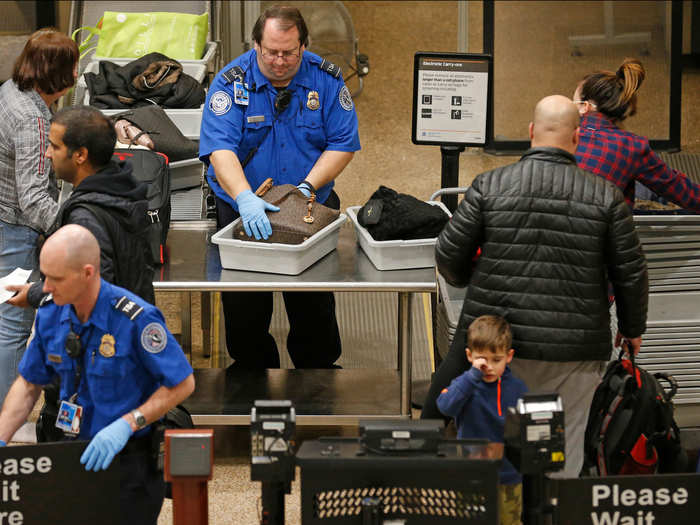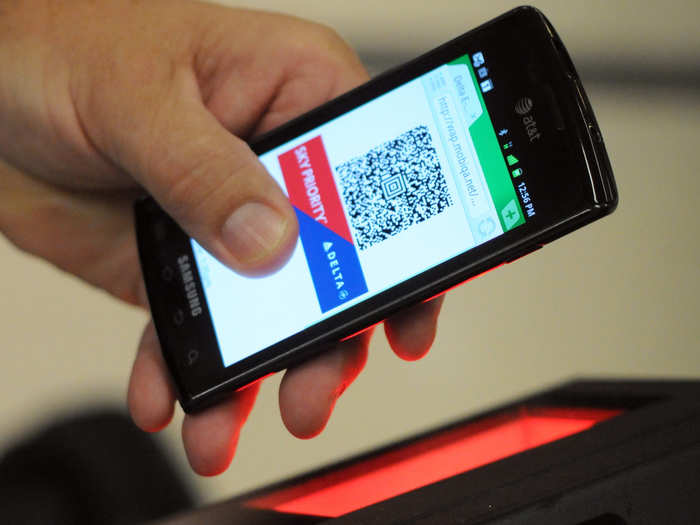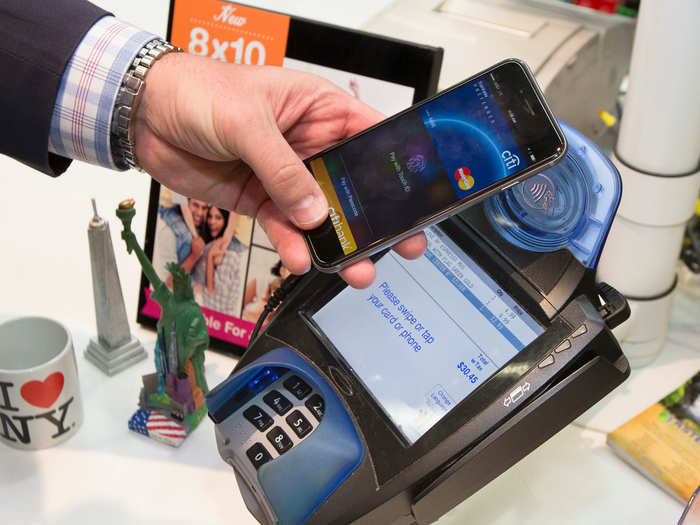Using my phone for my boarding pass.
Mobile boarding passes have largely rendered paper boarding passes obsolete and the latter is no longer required on most flights, though some exceptions apply for international flights. For most flight bookings, mobile boarding passes are issued directly after the online check-in process and can be kept in a phone's virtual wallet.
Now, mobile boarding passes are making traveler safer by further reducing contact with a machine or person when flying. When traveling with only carry-on bags, the entire airport check-in process is eliminated entirely and passengers can head directly to the security checkpoint in most instances.
Storing items in my bag at the security checkpoint and using as few bins as possible.
When going through security, an easy way to avoid the shared-use bins is by storing items in carry-on luggage, purses, or other bags, and sending it through the x-ray machine. Placing your personal items in multiple bins, which are also used by other travelers, means more exposure to potential germs.
Storing loose belongings such as a phone or wallet in a bag is not only an ideal way to avoid germs but also to spend as little time in the security screening area as possible. Sometimes, I put loose items in the pockets of my coat or jacket, and send them through the x-ray. I also ensure anything remotely metal is removed to avoid a potential pat-down.
Never giving up control of my phone.
Having a mobile boarding pass also gives passengers greater control at both the security checkpoint and boarding gate.
At the security checkpoint, a Transportation Security Administration (TSA) agent will always need to inspect a paper boarding pass, often marking it with a pen. A mobile boarding pass only needs to be scanned, which flyers can do themselves by simply holding the phone over the scanner, with no need for the screener to physically hold the device.
I always keep control of my phone and scan it myself. Sometimes the scanner is passenger-facing and while on some occasions I've had to reach over the kiosk, TSA screeners are aware some passengers have that preference.
When boarding, the procedure for most is to give the printed boarding pass to the gate agent to scan. But with a mobile boarding pass, the agent will likely direct you to place your phone over or under the scanner yourself. Unless there is a problem with scanning the boarding pass, I've never had to give up control of my phone to the boarding agent.
If a flight requires the use of a paper boarding pass, I'll still insist on scanning myself to prevent unnecessary physical interaction.
Using virtual phone wallets or mobile banking when making purchases in the terminal.
Similar to using a mobile boarding pass to board a flight, travelers can use their phones to make purchases at airport restaurants, duty-free shops or newsstands to avoid contact with a cashier if paying with cash or a credit/debit card terminal if paying with a card.
Most smartphones now have virtual wallets that allow users to add their credit cards and pay via their mobile device. For iPhones, the program is called Apple Pay and for Androids, Google has a system called Google Pay.
Both work the same in that they can send credit or debit card information directly to the terminal without the user having to touch anything but their phones. Most retailers accept Apple Pay and Google Pay, further reducing potential contact with germs.




